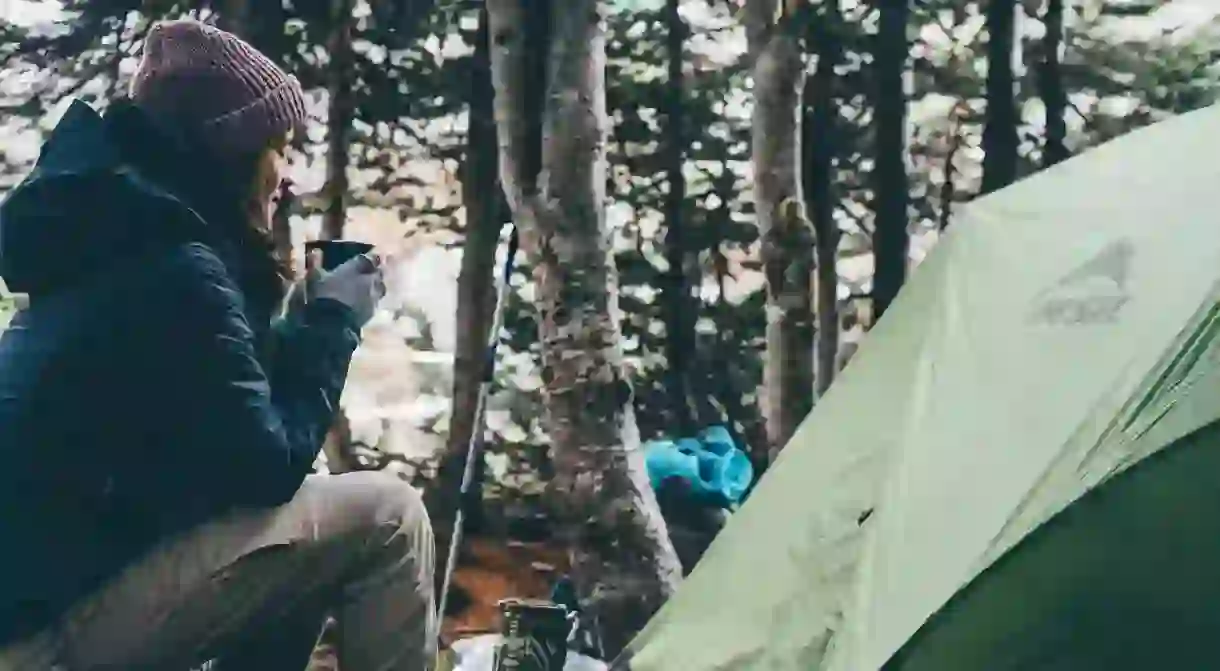13 Essential Things to Pack for a Northwest US Camping Trip

Before you embark on a camping adventure in Northwest USA, make sure your backpack is filled with the right supplies and equipment. You are accountable for your own care and safety while camping, and these items could save lives—including yours. Learn how to use your kit, understand your limits and be sure to leave an itinerary with relatives or friends.
Tent
Don’t hesitate to bring a big tent if the need calls for it, but not unless you are going to a well known campground with big, even tent pads. An emergency space blanket or tarp can help shelter you from sudden weather outbursts.
Sleeping pad and sleeping bag
During the summer, a 35-degree bag is perfect for the majority of Pacific Northwest camping, although a cold night can cause much discomfort, and it would be better to bring a warmer version. Synthetic versus down isn’t crucial for a first-time trip. A sleeping pad is the main ingredient for a warm night’s sleep, or a drug-free rush—if you inflate it without a pump.

Pocket knife
A multi-tool or pocket knife can be indispensable in various situations. It’s very useful for important tasks such as creating a spare shelter, lighting the campfire with inadequate fuel, and minor ones like fixing a damaged backpack. Just keep the knife clean and sharp, and don’t forget to get your Totin’ Chip (Boy Scouts) or Whittling Chip (older Cub Scouts).
Stove
Don’t settle for a little backpacking stove for camping in places like the Northwest. And there may be instances when the need to make both bacon and coffee all at once will hold back a campsite mutiny.
Camp chairs
One chair per person in case the campsite holds a small celebration by the campfire. This is especially crucial with dispersed camping.

Navigation
Compasses and maps are two of the most effective navigation systems. Include an altimeter and a GPS, especially in the Northwest. You’ll want to know exactly where you are and let your folks know about it too. Topographic maps should accompany you on trips that take in anything more than just a short footpath or oft visited trail. Compasses, combined with map-reading skills, are a vital instrument if you become confused with the trail.
Isn’t bringing GPS and compass at the same time an over-kill? No. Compasses weigh next to nothing and don’t rely on batteries, making them a crucial backup.
Illumination
Headlamps are the preferred light source in the backcountry, as they enable hands-free operation and are lightweight and small. They also have an extended battery life. Numerous headlamps provide a strobe mode. A great alternative in emergencies; headlamps provide their longest life while turned on in strobe mode.
Packable lanterns and flashlights have value as well—a few cast extremely intense beams and are handy for signaling in emergency situations. Don’t forget to bring spare batteries. Each member of a party should bring along their own light.
First-aid supplies
Many people prefer to customize theirs, but first-aid kits needn’t be complicated. A good one must include blister treatments, adhesive bandages of different sizes, a couple of gauze pads, disinfecting ointment, adhesive tape, over the counter pain medication, pen and paper. It’s worth considering nitrile gloves as well.
Firestarter
Always carry waterproof matches in a tight container and include a waterproof or dry striker. It’s worth packing a lighter too. In the Northwest, expect to deal with stuff like wet kindling. Balls of crushed wood chips, solid chemical fuels, or even candles can work well.
Insulation
Conditions in the region can easily turn from warm to chilly, windy or wet, even in the warmer seasons. So it’s wise to carry an extra layer of clothing in case something unanticipated prolongs your exposure to the elements. Common alternatives include one layer of underwear (bottoms and tops), an insulating balaclava or hat, a synthetic vest or jacket and extra socks.

Nutrition
Always bring along extra food when on a camping trip in case an unforeseen situation delays your return. At least carry an extra day’s worth—something that keeps for an extended period, has a high energy content, and requires little preparation. Loads of people pick things they dislike, so they won’t be drawn to break into the emergency supplies unless they really need them.
If you are hiking with young children, then you will likely require more snacks than usual, so be prepared.
Foul weather gear
In the Northwest, you should think about rain gear in all seasons. Even if you’re only going out for the day, bring waterproofs with you because you never know when it’s going to rain. Keep track of the weather conditions before you start the trip.
Waterproofing spray
This could come in handy as not everything you bring to camp is waterproof. You can waterproof your tent or your shoes, if you haven’t brought any boots.
A few other items to consider
A mirror (for signaling), insect repellent, whistle, watch, extra socks, gloves, as well as an orange vest in the hunting season are little extras you can take with you as well.













